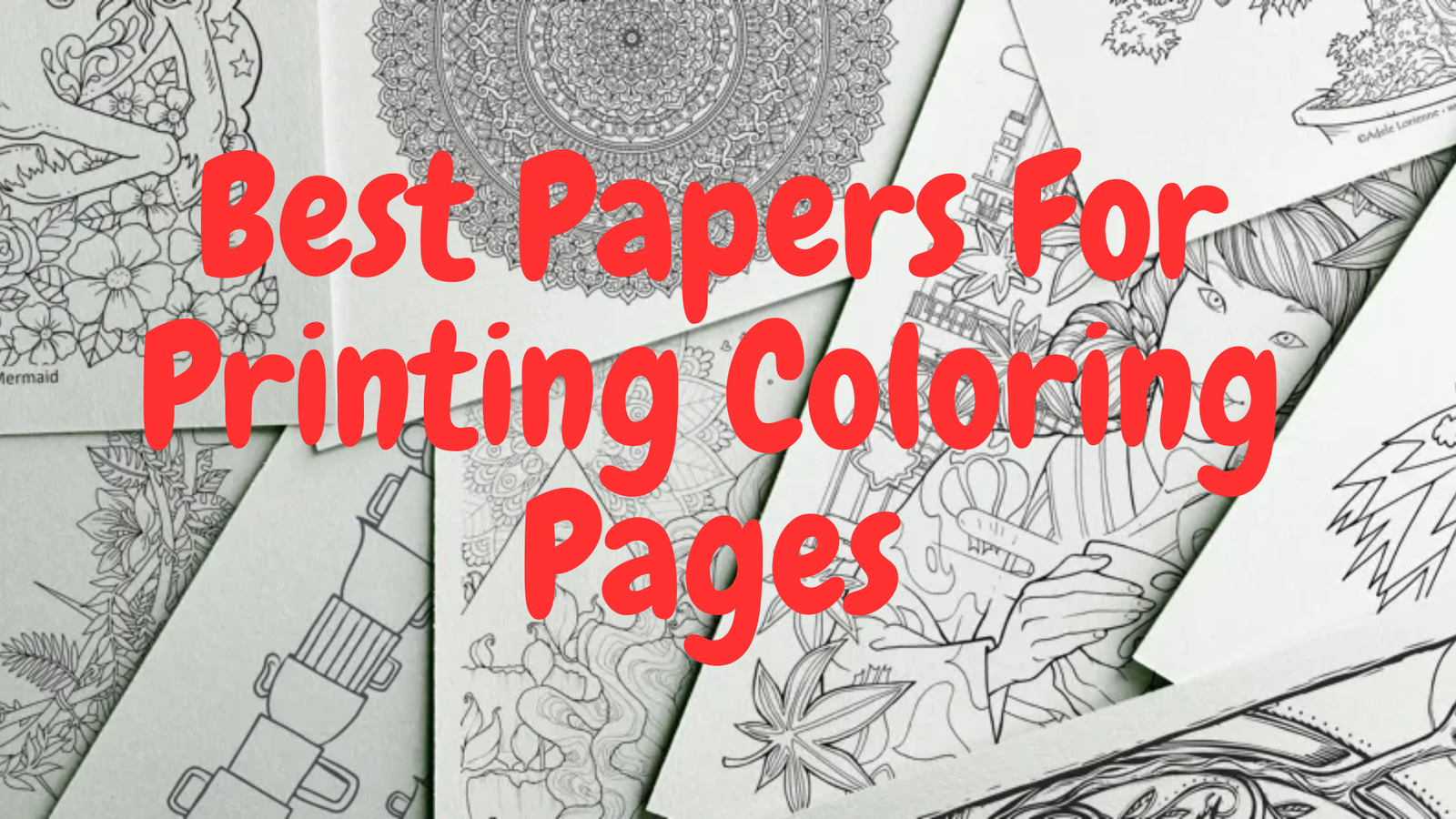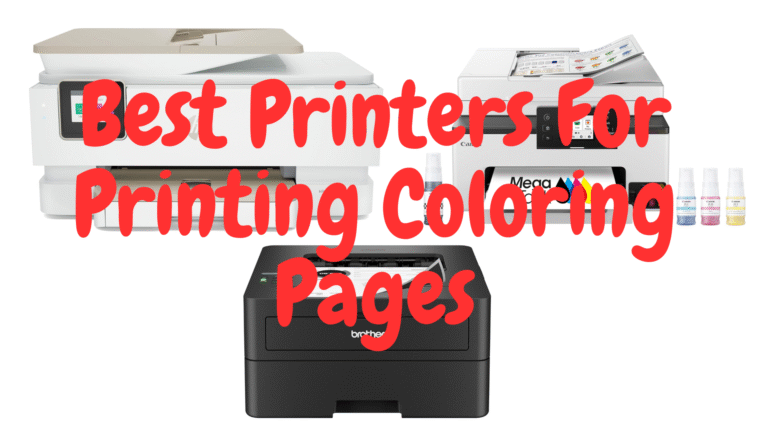The Colorist’s Canvas: Choosing the Perfect Paper for Printing Coloring Pages
Ready to transform those digital coloring designs into tangible masterpieces? The secret to a truly satisfying coloring experience often lies in an unsung hero: the paper! Whether you’re a parent seeking budget-friendly fun for the kids, an adult enthusiast chasing artistic perfection, or an educator looking for versatile classroom materials, the right paper can elevate your coloring from simple pastime to pure joy. Let’s embark on a journey to discover the ideal paper for your printable coloring pages!
Why Paper Matters: More Than Just a Surface
Think of paper as the foundation of your artwork. The wrong choice can lead to frustrating bleed-through, colors that appear dull, or a surface that can’t handle your chosen coloring tools. Conversely, the perfect paper enhances vibrancy, allows for smooth application, and even withstands enthusiastic erasing or multiple layers of color. It’s about creating a delightful tactile experience and a final product you’re proud of.
Decoding Paper Lingo: Key Factors to Consider
Before we dive into specific recommendations, let’s demystify some common paper terms. Understanding these will empower you to make informed choices:
- Paper Weight (lb or gsm): This refers to the thickness and sturdiness of the paper. Standard copy paper is often around 20lb (75gsm). Heavier papers (e.g., 65lb-110lb or 100gsm-200gsm+) are more durable and less prone to bleed-through.
- Thickness (Caliper): Related to weight, this is the physical thickness of a sheet. Thicker paper generally feels more premium and can handle more demanding media like markers.
- Opacity: This measures how much light passes through the paper, or essentially, how see-through it is. Higher opacity means less chance of the image on the other side (if double-sided) or the surface underneath showing through. BookBaby explains, “Paper opacity refers to how much text or images show through the paper.” (BookBaby).
- Bleed-Through Resistance: Absolutely crucial if you’re using markers, especially alcohol-based ones. Some papers are specifically coated or designed to prevent ink from soaking through to the other side or your work surface. Lighter weight papers are more prone to show-through and bleed-through. (Papierniczeni).
- Brightness: Measured on a scale typically from 1 to 100, brightness affects how vivid your colors appear. A higher brightness (e.g., 92-98) provides a crisp, white background that makes colors pop.
- Texture (Tooth): This refers to the surface feel of the paper.
- Smooth/Fine: Ideal for markers and fineliners, allowing for crisp lines and even ink flow.
- Medium/Vellum: Has a slight “tooth” or texture that grips pigment from colored pencils, allowing for better layering and blending. Sarah Renae Clark mentions vellum surfaces are “the perfect choice for colored pencil.” (Sarah Renae Clark Creative).
Paper Recommendations for Every Colorist
1. Standard Copy Paper: The Budget-Friendly Everyday Hero
Best for: Parents, families, educators on a tight budget, kids’ everyday coloring, crayons, and light colored pencil work.
This is your go-to for sheer volume and cost-effectiveness. While not the most luxurious, standard 20lb copy paper is readily available and perfect for casual coloring sessions. It’s a fantastic option when you need many pages printed quickly and affordably.
User Experience: Easy to print on. Works well with crayons and some colored pencils. Erasing can sometimes damage thinner paper. Final appearance is decent for casual use, but colors might not be as vibrant as on specialized paper.
Technical Specs to Look For: Typically 20lb (approx. 75gsm). Opt for a higher brightness (92+) if possible, for a cleaner look.
Value & Pricing: Unbeatable for price per sheet. Excellent for bulk printing.
Our Pick: Amazon Basics Multipurpose Copy Printer Paper, 20 lb
This paper offers a good balance of brightness and affordability for everyday needs.
Heads up: Markers, especially alcohol-based ones, will likely bleed through standard copy paper. Place a protective sheet underneath!
2. Heavier Weight Printer Paper / Light Cardstock: The Versatile Step-Up
Best for: Adult coloring enthusiasts wanting better quality without breaking the bank, educators needing more durable sheets, mixed media use (pencils, gel pens, some markers with caution).
Moving up to a 24lb-32lb (approx. 90-120gsm) printer paper or a light cardstock (like 65lb / 176gsm) makes a noticeable difference. These papers are thicker, feel more substantial, and offer better resistance to bleed-through than standard copy paper.
User Experience: Colors appear more vibrant. Holds up better to erasing and layering. Gel pens and some water-based markers might work well, but always test alcohol markers.
Technical Specs to Look For: 24lb-32lb (printer paper) or 65lb (cardstock). Good brightness (96+). Smooth finish is common.
Value & Pricing: Still quite cost-effective, especially when bought in reams.
Our Pick: Neenah Bright White Cardstock, 65 lb
Neenah offers reliable quality. Their 65lb cardstock is a popular choice for a more robust feel and is often mentioned for its smooth finish suitable for various printing projects.
3. Marker Paper / Smooth Cardstock: Taming the Bleed
Best for: Adult coloring enthusiasts who love markers (especially alcohol-based like Copic or Ohuhu), illustrators.
Markers demand paper that is smooth and, crucially, bleed-proof (or highly resistant). Specialized marker pads often have a coating. Heavy, smooth cardstock (80lb cover / 216gsm or higher) can also work well. Coloring Faith suggests the “best combination for coloring with markers is a smooth texture, heavy weight paper (80lb text or heavier).” (Coloring Faith).
User Experience: Minimizes or eliminates bleed-through, allowing for saturated colors. Smooth surface prevents markers from fraying. Ink often sits on top, allowing for blending before it dries.
Technical Specs to Look For: Specialized “bleed-proof” coating. Smooth surface. Weight typically 70lb text (104gsm) up to heavy cardstock (100lb+ cover / 270gsm+).
Value & Pricing: Can be pricier, but essential for preserving your markers and artwork.
Our Pick (Specialized): Bee Paper Bleedproof Marker Pack
Known for its ultra-smooth sheet and bleedproof qualities, approved for use with Copic pens.
Our Pick (Cardstock): Heavyweight White Cardstock (80lb Cover / 216gsm or higher)
A good quality, smooth, heavyweight cardstock can be a versatile alternative for markers.
5. Mixed Media Paper: The All-Rounder
Best for: Artists who like to experiment with various mediums on their coloring pages (pencils, markers, light washes of watercolor/ink).
Mixed media paper is designed to handle a bit of everything. It typically has a good weight and a surface that can take dry media well, while also being sized to handle light wet media applications without excessive buckling.
User Experience: Versatile and forgiving. Allows for experimentation. Surface texture is usually a good compromise for different tools.
Technical Specs to Look For: Weights usually range from 70gsm – 300gsm. Often has a vellum-like surface.
Value & Pricing: A good mid-range option if you don’t want to buy multiple specialty papers.
Our Pick: Canson XL 70 gsm A4 Paper
A popular choice, often cited for its heavyweight nature and suitability for various techniques including watercolor, gouache, marker, and drawing.
Tailored Advice for Different Colorists
Parents and Families: Your priorities are likely safety, affordability, and quantity. Standard copy paper is your friend for everyday fun. Consider investing in a slightly heavier option like 24lb paper for special projects or if your kids are using wetter mediums like washable markers. Bulk buying is key!
Adult Coloring Enthusiasts: You’re likely seeking quality, texture, and artistic results. Match your paper to your preferred medium. Don’t be afraid to invest in specialized papers like Strathmore 400 for colored pencils or a good marker paper. The difference in your final artwork will be noticeable. Consider paper weight (70lb and up often preferred, as seen in KDP Community discussions (KDP Community)) to prevent bleed-through.
Educators and Therapists: You need a balance of quality, cost-effectiveness, and often, bulk. A good mid-weight paper (24-32lb) or light cardstock can be a versatile choice. For therapeutic benefits, the tactile experience of coloring on decent paper enhances the calming effect. Consider newsprint for rough sketching or when budget is extremely tight, as it handles dry media reasonably well for practice. (Amazon Newsprint Category).
Final Thoughts: Embark on Your Coloring Adventure!
Choosing the best paper for printing your coloring pages is a personal journey, but armed with this knowledge, you’re well on your way to making choices that will enhance your creativity and enjoyment. Don’t be afraid to experiment! Grab a few different types, test them with your favorite coloring tools, and see what sparks joy for you.
Happy coloring, and may your pages always be vibran



One Comment